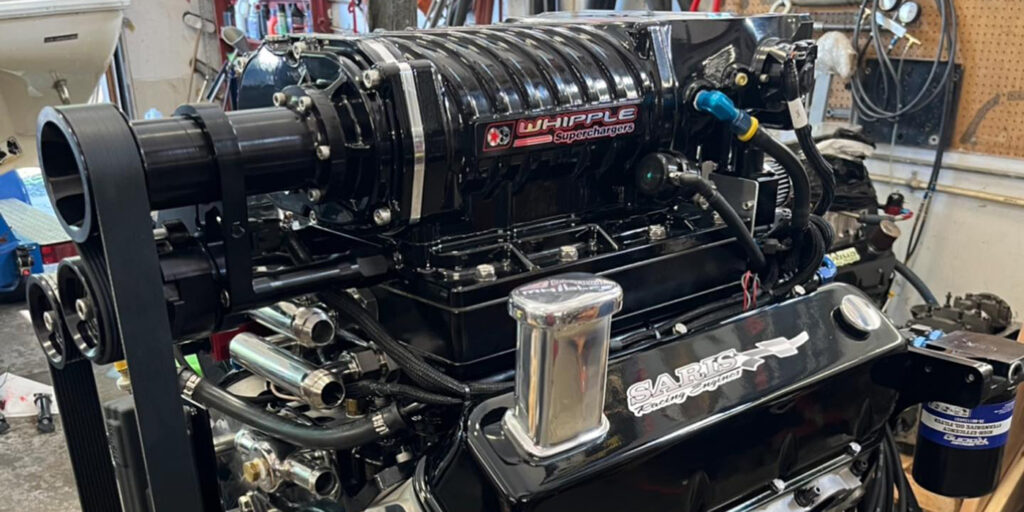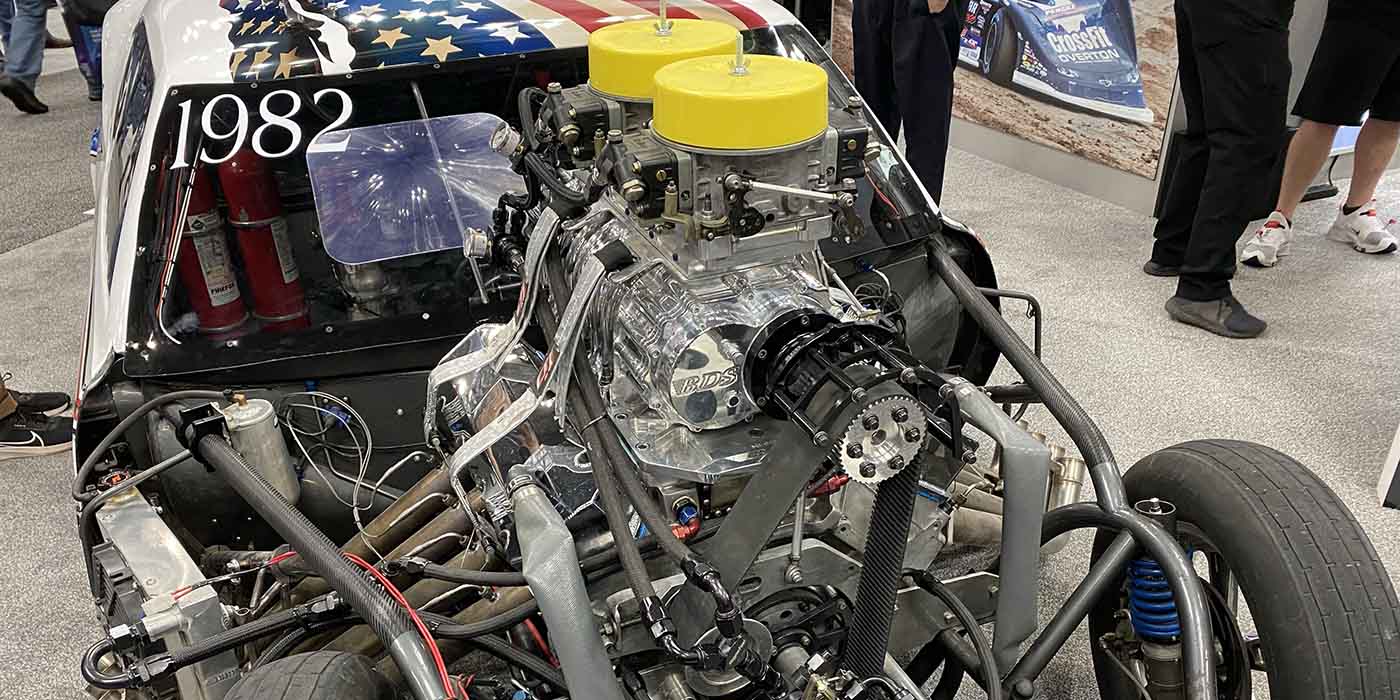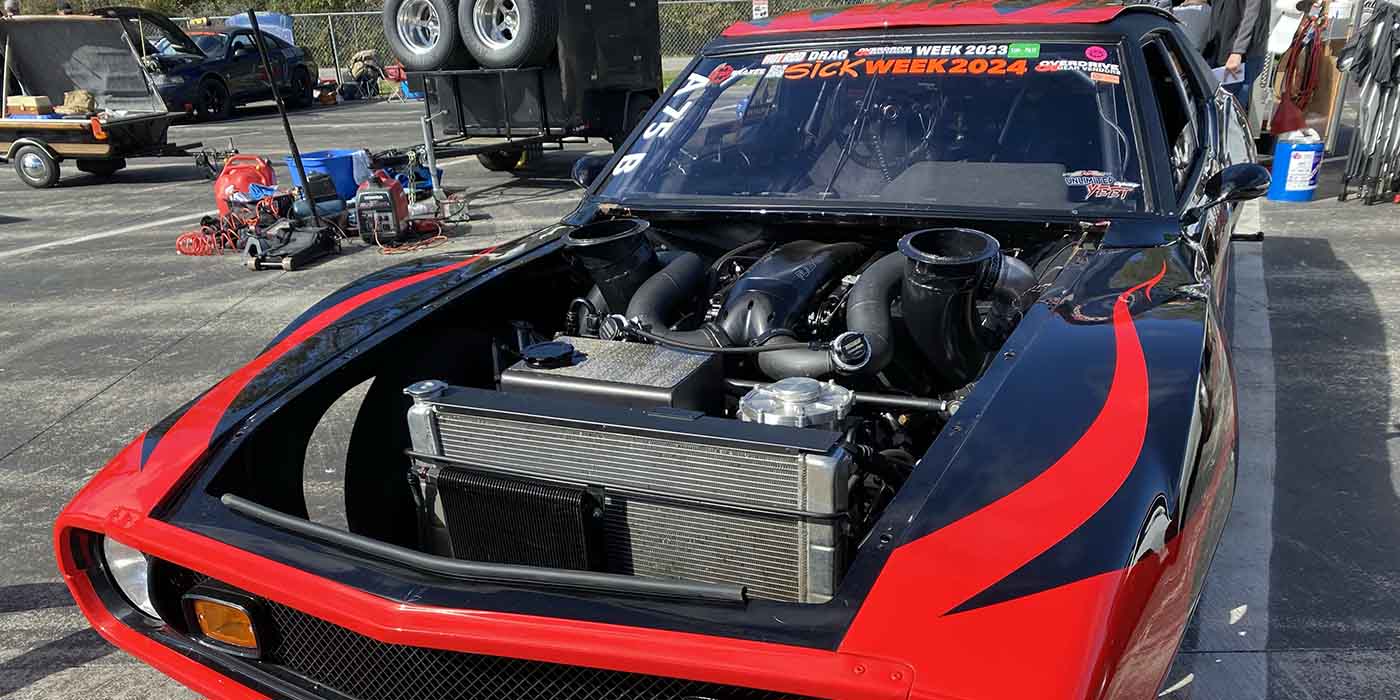Being in the high-performance marine industry means here at Team Saris Performance Marine our most common engine builds involve the big block Chevy platform. We’re also one of Whipple Superchargers’ oldest marine dealers, so many of our engine builds involve the installation of a Whipple supercharger. We’ve been in this industry for 35 years, and are located on Lake George in Bolton Landing, NY. Although we utilize the big block Chevy platform, there are many aspects that make a marine engine different from automotive applications and I’ll dive into those differences here.
First of all, boats do not have multiple forward gears and boats never go downhill or coast, but al-ways operate under a constant “uphill” load. Boats also require perfect, low-speed manners at speeds below 1,000 rpm or drive damage can result. If you have a high idle speed, it may translate into a vessel that is hard to handle around docks and launch ramps. With only one forward gear, you’re in fourth gear all the time, and that has to be taken into account. Marine engines also require the highest level of endurance capabilities. A high-performance boat will run for extended periods at high rpms or even wide open throttle. These runs are often measured in hours not seconds.
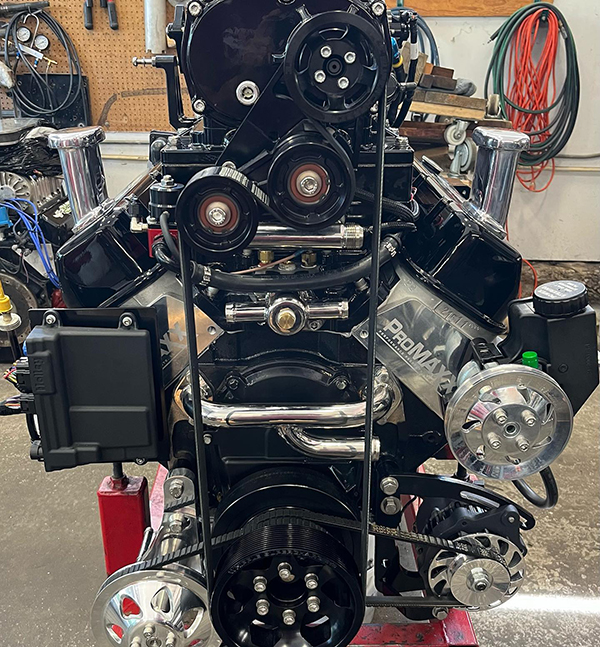
To demonstrate how these goals may be achieved I’ll outline one of our recent builds – a 509 cubic inch big block with a Whipple 3.8L port-injected supercharger making over 950 horsepower and 875 ft.-lbs. of torque on high-test pump gas. With durability being first and foremost, it all starts with high-quality components. This is not someplace to cut corners on a marine build. For 4.000” stoke big blocks (the 509 is 4.000” stroke x 4.500” bore), we use a Chevy high-performance forged crankshaft and 502 block. If we are building larger than a 4.000” stroke will allow, we are careful to use a high-quality forged crank from a manufacturer such as Callies or Compstar usually. Bargain offshore-built cranks will not survive in the marine environment. We also use a quality connecting rod (Oliver, Callies, etc.) with the best bolts available. Again, not a place to cut corners.
The valvetrain is probably the most problematic system on marine big blocks, so this is where the supercharger really helps. The addition of a supercharger allows for a relatively mild cam choice. We pay special attention here so the sustained high-speed operation will not lead to issues. There are no pre-assembled heads on the market that withstand the marine environment. None. Period. You must buy a casting and do your own setup. We tend to use Isky lifters, cams and springs, although we do use GM lifters on more mild builds. We use REV super-duty stainless intake valves and Inconel exhaust valves, along with Isky valve springs.
The Isky cam for a build like this will be in the 238/246 @ .050 range with 610/632 lift on a 114 lobe separation angle. A wide lobe separation angle is needed to avoid water reversion with a water-cooled marine exhaust. Keep in mind that not all cams with similar specs will necessarily be the same. Some cams designed for drag racing applications may have a similar overall spec, but much more aggressive opening and closing ramps, which make them unsuitable for an endurance application.
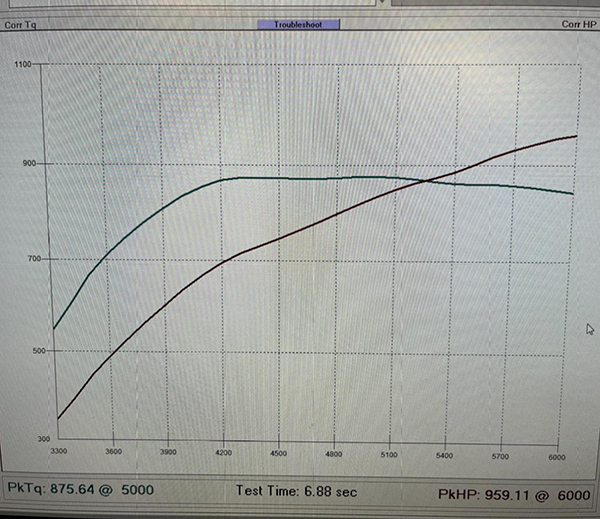
Moving on to the rocker arms, these components are a little bit more application specific for boat engines. For engines in endurance race boats that will be over 5,800 rpm for an hour at a time, we use T&D shaft-mount systems. On this 509, we used COMP 1620 as it’s going in a performance pleasure boat. Will it be run hard? Sure. But, you’ll run out of lake long before an hour.
The rest of the parts list is as you might expect – high quality for strength and durability. We utilize aluminum heads because of their ability to transfer heat, so those are the preferred choice for a supercharged application. We have found we are able to run a full pound more of boost without detonation because of the aluminum head’s ability to stay cooler. To retain good drivability while not in boost, we use heads with a 320-340 cc runner size on our 509s.
For the pistons in an engine like this, we use lower compression blower pistons – 8.23:1 on this build – along with a Holley HP engine management system and a high-quality marine certified fuel system such as an Aeromotive Eliminator pump and regulator.
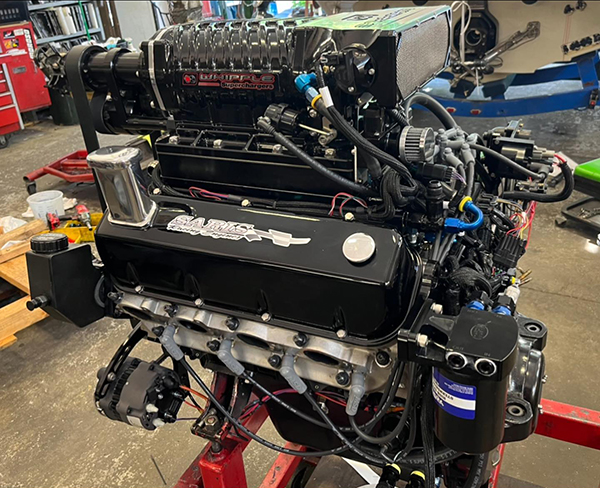
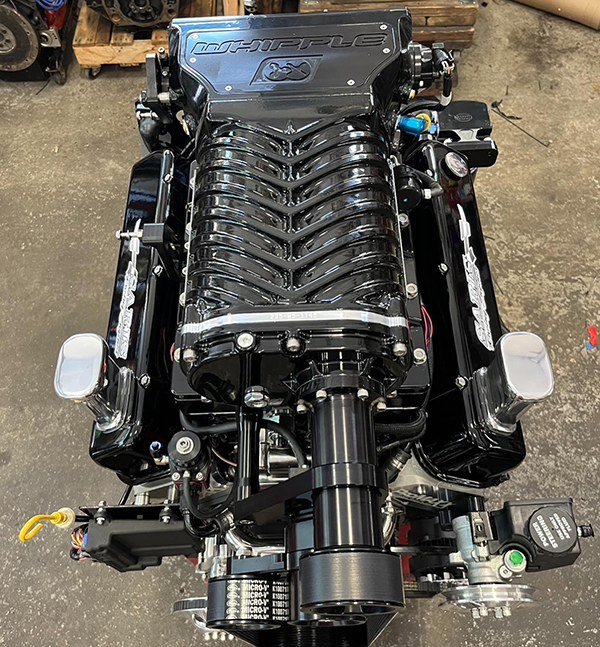
Another important component is the thermostatically controlled oil system. Due to the constant load these engines will operate under, they require large oil coolers and large capacity oil pans. We use 8-14 quart pans depending on what the installation will allow. Without a thermostat, it’s impossible to get any heat in the oil under light load or idle conditions. Without this setup, scuffed bearings are a real possibility.
While on the subject of bearings, it should be noted that some of the tolerances used in automotive applications may not be appropriate for a marine performance engine. Engines cooled by seawater (fresh or salt), will run cooler and will need more cylinder-to-wall clearance than an automotive ap-plication. Supercharged engines also need additional piston-to-wall clearance. Depending on bore size, piston-to-wall clearances of .006”-.008” are common. Even with a thermostatically controlled oil system, it’s very difficult to warm up 14 quarts of oil at an idle because the engine just doesn’t make enough heat. Therefore, rod and main bearing clearances that are towards the high side are also required and 20-50 racing oils.
The port fuel injection and Holley HP EFI engine management system give us a high degree of control over our 509. With fuel and timing trim for individual cylinders along with Whipple’s super-efficient MOAC (mother of all intercoolers) intercooler, we are able to run 12-lbs. of boost with an air/fuel ratio of 12.2 and stay comfortably away from detonation with intake air temps well below 100 degrees F. Timing is varied based on rpm and load, but the timing map in the Holley program makes this easy. We aim for 34 degrees F under light load non-boosted conditions, 28-30 degrees F around peak torque under boost, and 32 degrees F at higher rpms under boost.
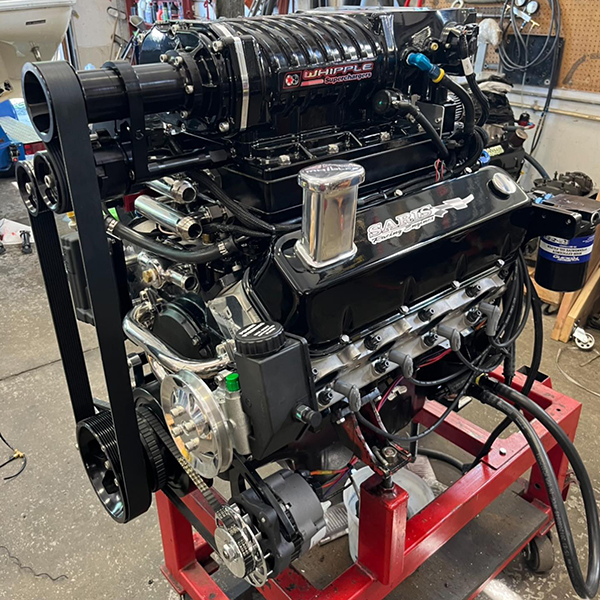
The exhaust on this engine will be CMI E Tops. We have modified our dyno to allow the use of marine headers as we found too much variation between dry dyno headers and the marine water cooled exhaust. It’s always best from a tuning perspective to run the engine dressed as it will be run in the boat. Very little individual cylinder tweaking was necessary, but the addition of 4% more fuel in #4 brought the 509 into perfect balance. The even fuel distribution afforded by the port injection not only increases the power output, but it also adds life to the engine by ensuring no single cylinder is being run too rich or lean.
As you can see, the supercharger is a major factor in achieving the above mentioned goals. Durability is achieved by allowing for a mild valvetrain that will live. Driveability is achieved because the mild valvetrain will be well mannered at idle and low speeds. Tons of mid-range torque with a super-flat torque curve will ensure great throttle response at all rpms, even with a one-speed transmission. Combine this with premium parts and painstaking attention to detail and you will have a true, kick-ass marine powerplant. EB

